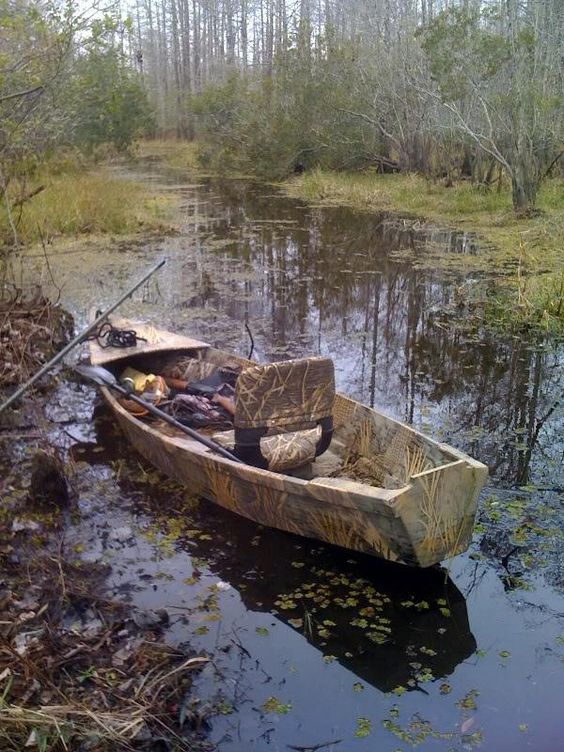
Wooden Duck Boat Plans: Tips for Hunting and Camouflage
Building a wooden duck boat is a rewarding project for any skilled woodworker. Not only is it a testament to craftsmanship, but it also provides a unique and intimate way to experience waterfowl hunting. This article delves into the essential aspects of constructing and utilizing a wooden duck boat, with a particular focus on optimizing its performance for hunting and camouflage.
Design Considerations for Hunting
Before embarking on the construction process, it's crucial to carefully consider the design features that will enhance the hunting experience. Here are some key factors to bear in mind:
Stability and Maneuverability
Duck hunting often involves navigating shallow waters and navigating through thick vegetation. Therefore, a stable boat with excellent maneuverability is paramount. Consider these features:
- A wide beam to provide stability and a low center of gravity for balance.
- A shallow draft for navigating in shallow waters.
- A rounded bow and stern for effortless gliding and turning.
- A stable platform for standing and shooting.
Capacity and Seating
The boat should accommodate the hunters and their gear comfortably. Ensure the boat has ample space for:
- Storage for decoys, hunting gear, and other essential equipment.
- Comfortable seating options, such as padded benches or swivel chairs.
- Adequate legroom for comfortable positioning while hunting.
Concealment and Camouflage
In the world of waterfowl hunting, blending in with the environment is crucial for success. The boat's design should facilitate optimal concealment:
- Low-profile design to minimize visibility above the waterline.
- A camouflage paint scheme that matches the natural surroundings.
- A smooth, flat hull to reduce reflection and enhance stealth.
Construction Techniques for Durability
Building a wooden duck boat is a labor of love that requires meticulous craftsmanship. Employing appropriate techniques ensures longevity and reliability:
Choosing the Right Wood
Select high-quality, durable wood that can withstand the rigors of hunting conditions. Common choices include:
- Cedar: Lightweight, rot-resistant, and naturally water-repellent.
- Mahogany: Strong, stable, and aesthetically pleasing.
- Marine plywood: Durable, water-resistant, and readily available.
Joint Construction
Utilize robust joinery techniques for strength and watertightness. Consider:
- Lap joints: Simple and effective for joining planks.
- Scarph joints: Strong, seamless joints for long, continuous planks.
- Rabbet joints: Create a watertight seal between planks.
Finishing and Protection
Proper finishing ensures the boat's longevity and protects it from the elements:
- Epoxy resin: Provides a waterproof barrier and protects against rot.
- Marine varnish: Offers UV protection and enhances the wood's natural beauty.
- Paint: Choose a durable, water-resistant paint for camouflage purposes.
Camouflage Strategies for Wooden Duck Boats
Blending into the environment is paramount for successful duck hunting. Camouflage strategies for wooden duck boats involve a combination of techniques:
Color Selection
Choosing the right camouflage colors is essential. Consider the prevailing colors in your hunting area:
- Natural camouflage: Mimics the colors of reeds, grasses, and water.
- Seasonal variation: Adapt camouflage colors based on the season and vegetation.
- Waterfowl patterns: Use patterns specifically designed for waterfowl hunting.
Application Techniques
Camouflage paint can be applied using various techniques:
- Spray painting: Allows for even coverage and subtle patterns.
- Brush painting: Offers more control for detailed patterns.
- Camo netting: Provides a quick and easy way to conceal the boat.
Concealment Accessories
Enhance the boat's concealment with these accessories:
- Decoys: Attract ducks to your position.
- Blinds: Provide further concealment from waterfowl.
- Camo fabric: Cover the boat's interior for additional concealment.
Tips for Using a Wooden Duck Boat
Once your wooden duck boat is built and camouflaged, it's time to put it to use. Here are some essential tips for maximizing your hunting success:
Placement and Positioning
Strategic placement is crucial for attracting ducks:
- Shallow water: Ducks prefer areas with shallow water for feeding.
- Open water: Provide a landing spot for ducks.
- Downwind: Allows ducks to approach without detection.
Quiet Operation
Noise can spook ducks, so approach your hunting spot quietly:
- Use a silent electric motor: Avoid the noise of a gasoline engine.
- Paddle gently: Minimize splashing and noise.
- Maintain a low profile: Stay low in the boat to avoid being seen.
Hunting Etiquette
Follow hunting regulations and practice responsible hunting etiquette:
- Obtain proper licenses and permits: Ensure you are legally allowed to hunt.
- Respect property boundaries: Obtain permission before hunting on private land.
- Hunt responsibly: Only shoot at legal targets and avoid waste.
Conclusion
Building a wooden duck boat is a labor of love that culminates in a unique and rewarding hunting experience. By carefully considering design features, employing meticulous construction techniques, and implementing effective camouflage strategies, you can craft a boat that will enhance your waterfowl hunting endeavors. Remember to prioritize safety, respect the environment, and practice ethical hunting principles.
0 comments:
Post a Comment
Note: Only a member of this blog may post a comment.